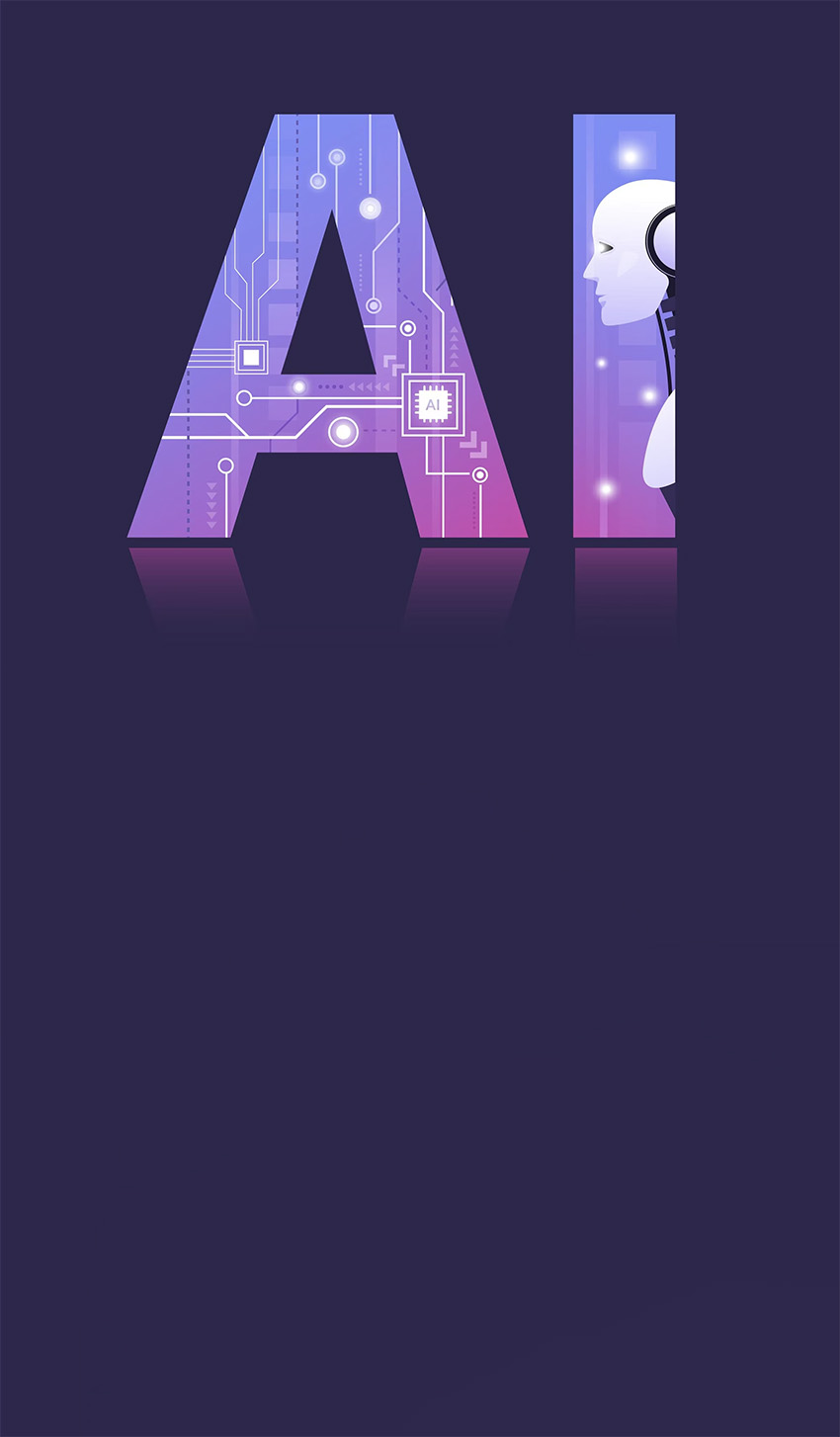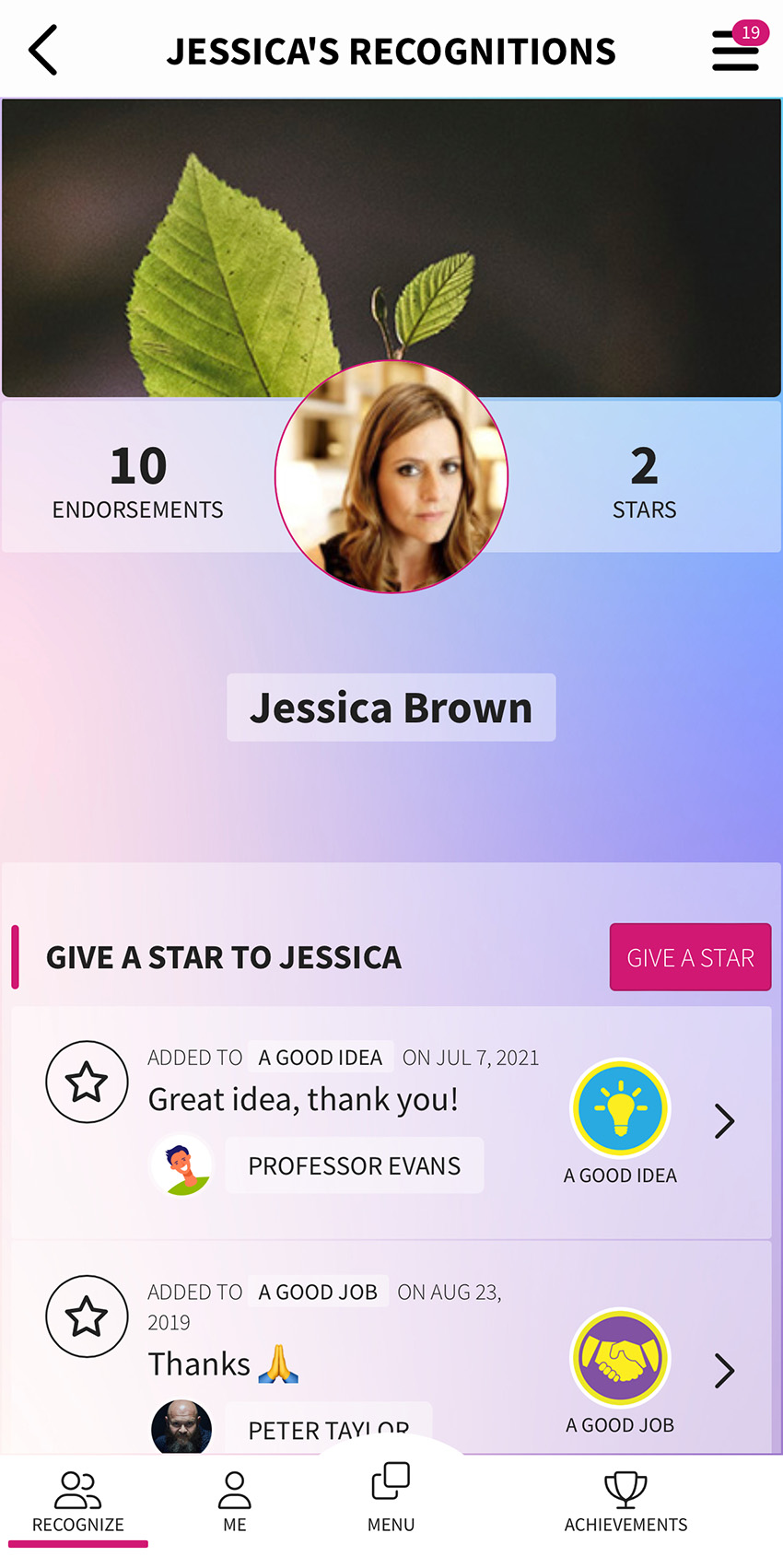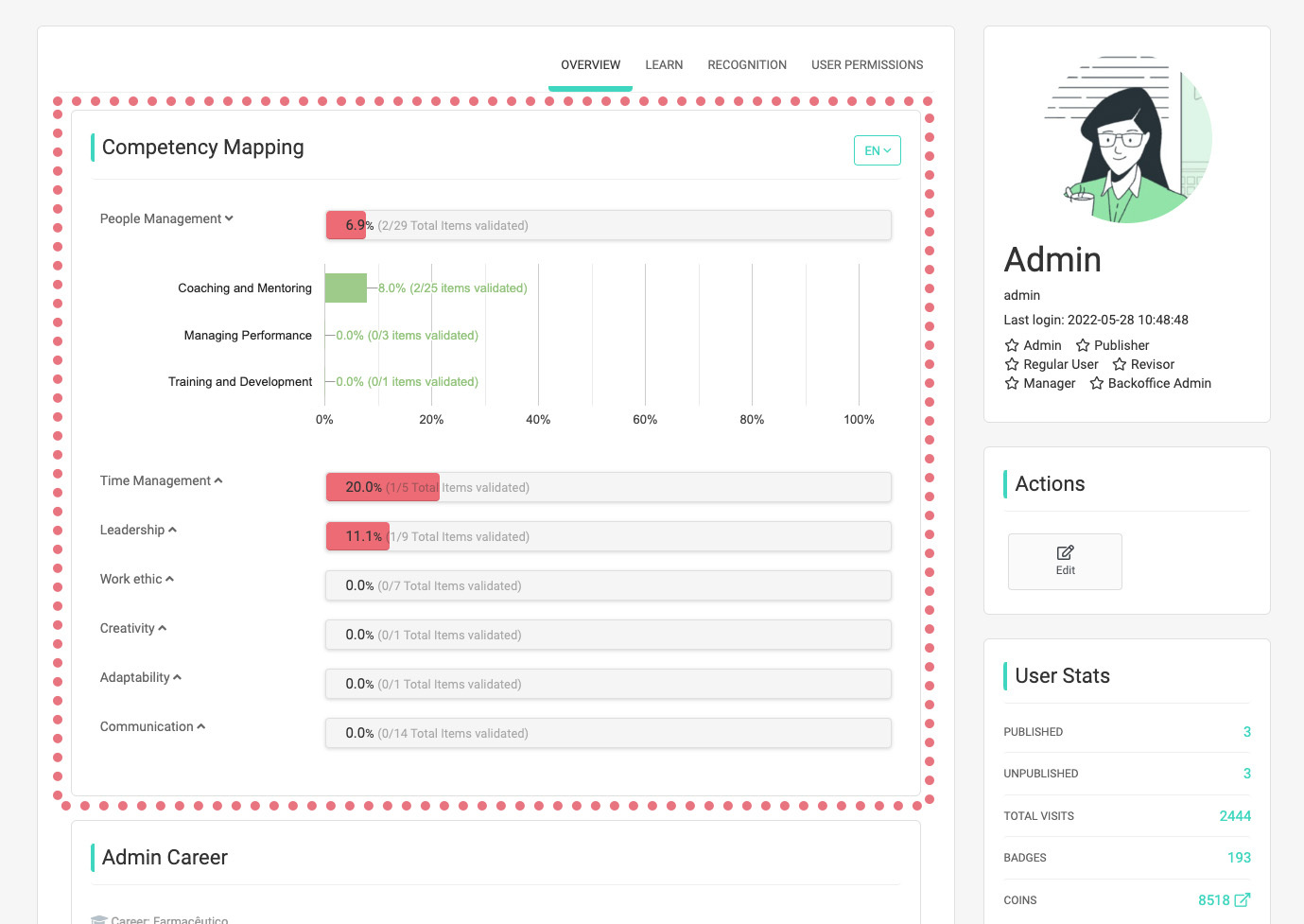 Introduction
Introduction
What is employee Recognition?
Employee recognition refers to the formal or informal acknowledgment of an employee’s behavior, effort, or business result that supports the organization’s goals and values. Recognition can take many forms, including verbal praise, awards, certificates, public acknowledgment, promotions, or other benefits and perks. The primary aim of employee recognition is to reinforce certain behaviors, practices, or activities that result in better performance and positive business outcomes.
Recognition is a fundamental human need and plays a crucial role in the workplace for both the employer and the employee. For the employer, recognizing employees can lead to increased productivity, lower turnover, and higher customer satisfaction. For employees, it can lead to higher job satisfaction, increased motivation, and a better overall work environment.
The act of recognition can be both formal and informal:
- Formal Recognition: This often occurs during set intervals, such as during annual award ceremonies, monthly team meetings, or performance reviews. It usually involves tangible rewards such as bonuses, promotions, or certificates.
- Informal Recognition: This is more spontaneous and can occur at any time. It can be as simple as a manager publicly praising an employee during a meeting or as elaborate as a surprise celebration for a team that has just completed a major project.
Effective employee recognition is timely, specific, and aligned with the company’s values and goals. It’s not just about rewarding the outcome but also recognizing the effort and behavior that leads to that outcome.
 The Importance of Recognition in the Workplace
The Importance of Recognition in the Workplace
Employee recognition is not just a nice-to-have; it’s a must-have in today’s competitive business environment. Recognizing employees for their contributions fosters a positive work culture, increases engagement, and ultimately drives business success.
The need for approval and recognition is part of human nature and is present in the various dimensions of life, with great relevance in professional activity where we are naturally more exposed nowadays. If it is legitimate to expect that someone notices, that someone speaks (well) of the subject, the action, the project or the result, as social beings that we are, we feel and it affects us positively if we are valued for the achievements made, if we are recognised for the performances and achievements, and if our talents are recommended.
According to the *aberdeen group, “best-in-class companies are 22% more interested in considering recognition programs to be extremely valuable to their success and it’s easy to see why from the following chart with the ROI of the benefits of adopting peer social recognition programs:”
The Link Between Recognition and ROI
Studies have shown that companies that invest intelligently in employee recognition see up to 5 times more ROI per employee. This is not just a correlation but a causation, as recognition directly impacts employee productivity, retention, and overall well-being.
The Current State of Employee Recognition
Traditional Methods of Recognition
Traditional methods like annual awards or bonuses are becoming less effective. They are often seen as obligatory rather than genuine forms of appreciation.
The Shift to Modern Recognition Strategies
Modern recognition strategies focus on real-time, personalized recognition that aligns with company values and goals. Discover GFoundry’s innovative real-time recognition solutions.
The ROI of Intelligent Recognition
Quantifying the Benefits
Intelligent recognition programs can lead to a 20% increase in employee engagement, which in turn can result in a 15% increase in productivity.
 Case Studies and Examples: Companies Excelling in ROI Through Recognition
Case Studies and Examples: Companies Excelling in ROI Through Recognition
Google: Peer-to-Peer Recognition Program
Overview
Google, known for its innovative workplace culture, has a peer-to-peer recognition program where employees can publicly acknowledge and reward their colleagues. This program is not just limited to monetary rewards but also includes public praise and other non-monetary benefits.
Impact on ROI
Google has reported a substantial increase in employee engagement and productivity since the implementation of this program. The company has seen a 37% reduction in employee turnover, which translates to significant cost savings and a higher ROI.
Salesforce: #SalesforceOhana Culture
Overview
Salesforce has a unique recognition culture encapsulated in its #SalesforceOhana program. Employees are encouraged to live the company’s values and are recognized for doing so in various ways, including social shout-outs, badges, and even paid time off for volunteering.
Impact on ROI
Salesforce has seen a 21% increase in sales productivity and a 40% reduction in the onboarding time for new employees. This has led to a substantial increase in ROI, making their recognition program a cornerstone of their business strategy.
Hilton Hotels: Catch Me at My Best
Overview
Hilton Hotels runs a program called “Catch Me at My Best,” where guests and employees can recognize any employee for going above and beyond. Recognition cards are publicly displayed, and monthly prizes are awarded.
Impact on ROI
Hilton has reported a 25% increase in customer satisfaction scores and a 22% increase in employee engagement scores since the program’s inception. This has led to increased customer loyalty and reduced employee turnover, significantly impacting ROI positively.
DHL: Employee of the Month
Overview
DHL has a global “Employee of the Month” program where employees are nominated and voted for by their peers. Winners receive a certificate, a pin, and a financial reward.
Impact on ROI
DHL has seen a 15% increase in employee engagement and a 10% increase in customer satisfaction since implementing this program. The program has also reduced turnover rates, leading to lower recruitment costs and higher ROI.
Key Takeaways
- Employee Engagement: All the companies saw a significant increase in employee engagement, which directly correlates with higher productivity and, consequently, higher ROI.
- Reduced Turnover: Lower turnover rates mean lower recruitment costs, which is a direct contributor to ROI.
- Customer Satisfaction: Companies like Hilton and DHL have seen increased customer satisfaction, which leads to customer retention and higher ROI in the long term.
Key Components of an Intelligent Recognition Program
Customization and Personalization
One size does not fit all when it comes to recognition. Customizable programs allow for a more personalized approach, which is more impactful.
Real-time Feedback and Recognition
Immediate recognition is more impactful than delayed recognition. Real-time feedback mechanisms can make this possible.
Integration with Existing Systems
Integrating the recognition program with existing HR and ERP systems can streamline the process and make it more efficient.
 The Role of Technology in Intelligent Recognition
The Role of Technology in Intelligent Recognition
Gamification and Employee Engagement
Using game-like elements can make the recognition process more engaging and fun for employees.
AI-Driven Recognition Systems
Artificial Intelligence can help in automating the recognition process, making it more timely and less biased.
Data Analytics and Performance Metrics
Using data analytics can help in measuring the effectiveness of the recognition program, thereby allowing for continuous improvement.
How to Implement an Intelligent Recognition Program
Planning and Strategy
Before implementing a recognition program, it’s crucial to plan out the strategy, including the goals, budget, and resources needed.
Execution and Monitoring
Once the plan is in place, the next step is execution. This should be followed by continuous monitoring to ensure the program is on track to meet its goals.
Continuous Improvement
Based on the data collected, the program should be regularly updated to ensure it remains effective.
 Measuring Success: The Engagement Thermometer
Measuring Success: The Engagement Thermometer
What is an Engagement Thermometer?
An Engagement Thermometer is a tool that measures the level of employee engagement and well-being in an organization.
How it Affects ROI
Higher engagement levels as measured by the Engagement Thermometer are directly correlated with higher ROI.
The Future of Employee Recognition
As technology continues to evolve, so will the methods for employee recognition. Companies that invest intelligently in this area will continue to see significant ROI.
Final Thoughts on Maximizing ROI Through Intelligent Recognition
Investing in intelligent recognition is not just good for employees; it’s good for the business. The ROI speaks for itself.
 Unlocking the Power of Intelligent Recognition with GFoundry’s Dynamic Solutions
Unlocking the Power of Intelligent Recognition with GFoundry’s Dynamic Solutions
At GFoundry we recognise the importance of these programmes and offer dynamic solutions through a specific module – Recognition – from which the company identifies people (and competencies) and promotes a culture of internal recognition (before the market does so and the best talents leave). We answer questions such as:
- Who do I want to publicly recognise?
- What attitudes and behaviours should I recommend?
- What feedback do I receive?
- What is my company’s competence map?
With this module you can create an internal recognition programme in which each employee can recognise and be recognised in the following areas:
- Acknowledgement and peer feedback with stars and comments;
- Behavioural competencies (the so-called soft skills)
- Technical skills (so-called hard skills).
 Making skill maps
Making skill maps
Have you ever imagined the advantage of making skill maps and using advanced statistics? You can do all the knowledge management of your human capital through analytics, and make more informed decisions.
You can also identify the right people for specific assignments with the available data. Sharing know-how facilitates organic engagement and promotes collaboration for everyone in the business, and this is an important differentiating factor in companies and organisations.
To ensure the success of a recognition programme, we just need an enabling culture with the right tools 🙂 And because the GFoundry platform is multi-module, all the modules available in the solution can connect with each other. As an example, a recognition programme could easily be linked to an emotional skills training programme using the Learn Module.
 The Association with the Market Module and the power of Gamification
The Association with the Market Module and the power of Gamification
Associating the Market Module with a recognition programme can reinforce the effectiveness of actions through the provision of benefits and some privileges.
Virtual coins can be attributed to each user for certain actions or for the achievement of certain goals and objectives, leaving it literally in the hands of employees to exchange them for items available in the Marketplace module, which in this case means complements or prizes provided to employees, such as vouchers, extra days of holidays, leisure experiences, social responsibility actions such as donations or participation in charitable activities, among others that are already part of your organisation’s portfolio.
Subscribe to GFoundry Newsletter: Weekly Insights on HR’s Most Pressing Topics
Ready to get started?
Take the next step and learn more about how GFoundry can help you.

 Introduction
Introduction The Importance of Recognition in the Workplace
The Importance of Recognition in the Workplace Case Studies and Examples: Companies Excelling in ROI Through Recognition
Case Studies and Examples: Companies Excelling in ROI Through Recognition The Role of Technology in Intelligent Recognition
The Role of Technology in Intelligent Recognition Measuring Success: The Engagement Thermometer
Measuring Success: The Engagement Thermometer Unlocking the Power of Intelligent Recognition with GFoundry’s Dynamic Solutions
Unlocking the Power of Intelligent Recognition with GFoundry’s Dynamic Solutions Making skill maps
Making skill maps The Association with the Market Module and the power of Gamification
The Association with the Market Module and the power of Gamification